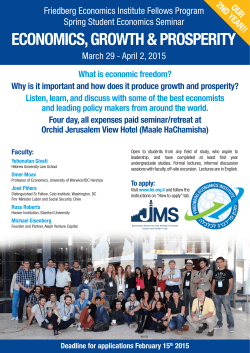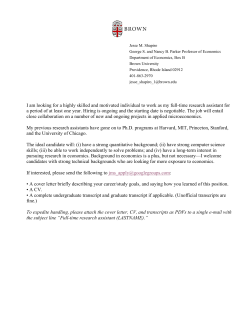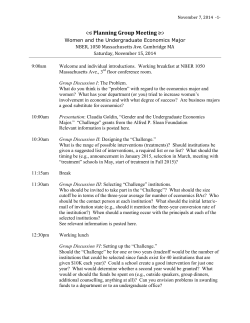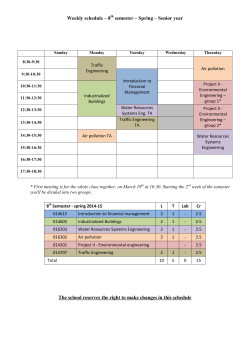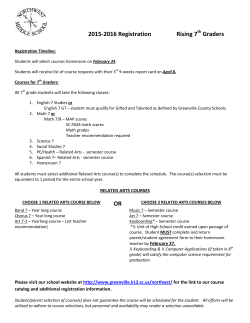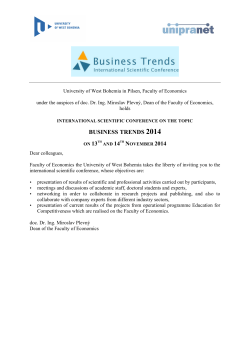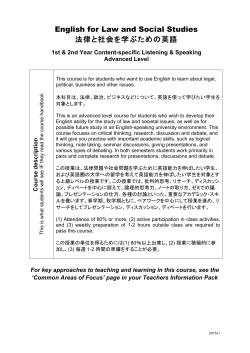
Program Details
Program Details Master of Science Program in Applied Economics and Business (M.Sc. AEB) Offered by Muzumbe University (Tanzania) In Academic Collaboration with CMR University, Bangalore (India) January, 2015 Cohort 1. Program Description The Masters’ Program in Applied Economics and Business is designed for students who aspire to a career in business. The course equips students with rigorous economic analysis methods and tools, thus it is differentiable from a generalized 1 MBA program. Another goal of this course is for students to develop a key understanding of a firm in its global and economic environments. This understanding helps in making key strategic decisions in the short, medium as well as the long – term. A typical graduate of the Masters’ program is expected to pursue a career in business, policy-making institutions, and think-tanks or extend their academic pursuits to a PhD. The Program extends to three semesters, with the first two semesters consisting of extensive course-work and one semester of thesis. The course work consists of introductory examination of microeconomic and macroeconomic theories, as well as training in the data analysis tools and techniques. The one of the aims of the coursework is to provide the students with the ability to comprehend the empirical analyses and reports pertinent to the discussion of business and economic issues. At the end of the course work, in the third semester, students will examine a business/economic research problem using the tools and techniques they have mastered during the coursework. This research problem will be of a contemporaneous, cross-disciplinary nature in East Africa and beyond. While the coursework is rigorous, it is accessible to students with undergraduate degrees in Economics, Business as well as pure sciences. The strategy of the program is to give students a well-rounded set of skills that prepare them for successful careers. 3. Programme Objectives The programme specifically aims at the following objectives: i. To help in developing in-depth understanding of managerial problem solving by adequately relating and interpreting the available business and economic data; ii. To familiarize the students with the emerging inter-disciplinary knowledge relevant to the analysis of business and economic problems in the given context; iii. To develop strong skills in economic and financial analysis by applying latest technological tools and techniques; and iv. To prepare for managerial career in the different business functions, focusing on area of economic and financial analysis; 4. Learning Outcomes Upon successful completion of this program, the student should be able to: i. Successfully analyze recommendations; any economic 2 /business data and provide ii. Successfully analyze a particular problem faced by an organization and produce findings in form of report as well as present these findings to an audience; iii. Conduct primary calculations such as time value of money, benefit –cost analysis as well as a host of financial ratios to compare firms/investments/assets; iv. Conduct both continuous and discrete choice regressions on cross-sectional and time-series data obtained from government, International agencies as well as financial data firms; and v. Competency in professional and technical writing skills that is essential for exploring employment opportunities in business. 5. Program Fee For 2014-16 Cohorts: US Dollar 4000.00 (Total) 6. Program Start Date For 2014-16 Cohorts: January, 2015 3 7. Course-Structure SI Course No Code Semester I 1 ECON 2 3 ABST ITIE 4 MMMT 5 FMEC Semester II 6 SMBD 7 8 9 10 11 FEAS ECOM PPMT FRAN REMD Semester III 12 Name Credits Economic Analysis of Business Decisions (Micro & Macroeconomics) Applied Business Statistics International Trade and Industrial Economics Marketing Management Free Market Economics 12 Strategic Management and Business Diplomacy Financial Economics & Actuarial Science E-Commerce- Models and Applications Project Planning and Management Financial Reporting and Analysis Research Methodology and Statistical Analysis 12 Thesis 48 4 12 12 12 12 12 12 12 12 12
© Copyright 2025

